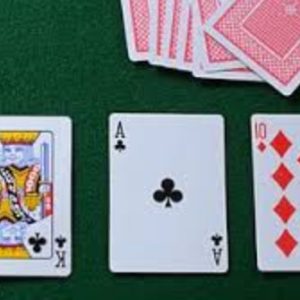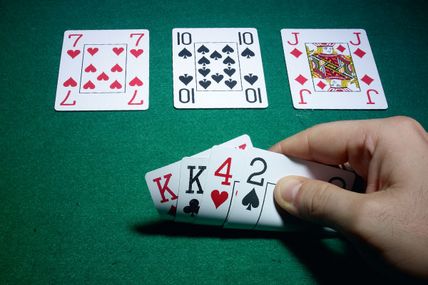Playing Board Texture in Omaha Poker

In Pot-Limit Omaha, much like Texas Hold’em, the community cards will help you determine your opponent’s range based on their actions. Once you have your opponent on a range, you then need to determine the best way to play the hand in order to make the most money. A board’s texture will help you make this determination.
Playing Dry Boards
When considering the dryness of a board, consider first how strong the nuts are and how likely the turn or river card will change this fact. For example, on a flop of K-K-K, only an ace or running straight or flush cards are going to improve your hand. In this case, you’re going to get out of the way unless you’re holding the case king or a pair of aces.
Another instance would be if you have Ac-2c-5d-3d and the flop fell Kc-10c-6c. In this spot, you have the nuts and only need to worry if the board pairs to give your opponent a full house.
Unless your board changes on the turn to give you cause to worry about being outdrawn, you will want to play most dry boards in such a way to allow your opponents a chance to catch up or bet with a 2nd nut hand.
Playing Drawing Boards
Players love to play drawing boards in Omaha, especially if the pot is multi-way. Straight draws are the most frequently played draws in Omaha. In fact, did you know that a set is an underdog to a big wrap on the flop and only 50-50 on the turn?
If you flop the nut straight, how you play it depends on whether it has a chance to be outdrawn. If you have the true nuts or nuts with a re-draw wrap, you will want to have your opponents try and pump the pot for you or even hit their 2nd nut straight so that you can punish them.

Flush draws are similar. You want to make sure that you have the nuts or are drawing to the nuts. If you are drawing, don’t invest too much money against rocks that are likely to fold a 2nd nut hand. This is a time where you want the bad players to draw to their inferior hands should you both hit.
Paired Boards
Paired boards can be dicey to play. If you flop the nuts, first consider whether it is reasonably possible to be outdrawn. For example, if you have J-10 on a J-10-10 flop, you might be vulnerable. However, if you had A-J on an A-A-J board, you want to consider slow playing as there are very few combinations to beat you.
Straights and flushes should be played very cautiously on paired boards, if at all. You don’t want to go crazy betting or going all-in with what’s surely a second-best hand.
Constantly Evaluate Your Situation
When you play Omaha, you have to evaluate your situation after every street. While you have the nuts on the flop, the turn or river can changes things in a hurry. It is often correct to continue drawing in Omaha as long as you’re drawing to the nuts, so make sure to evaluate your hand for any vulnerabilities after each street.
Using board texture will help you put your opponent on a range of hands, but you also need to constantly keep in mind not only where you stand on the flop, but also what hands can potentially outdraw you. Thinking ahead will allow you to avoid the trap of shoving your stack with the nuts only to have it go to your opponent when they hit their draw.
